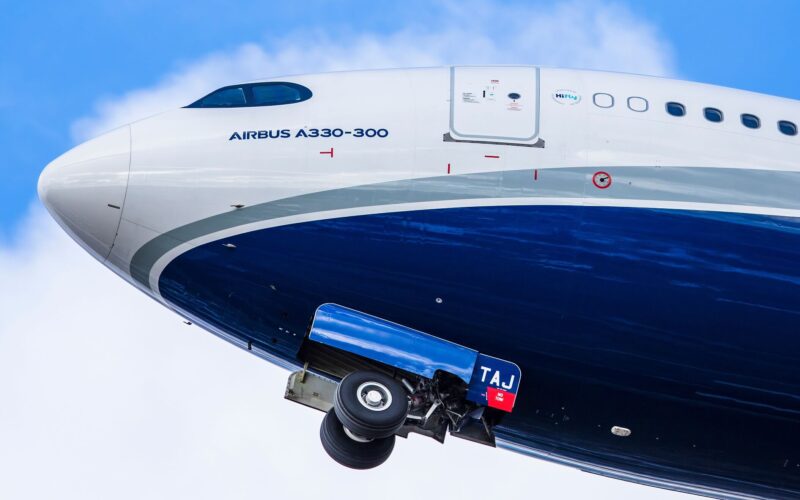On January 17, 1994, the Airbus A330-300 made its introduction with Air Inter, flying from Paris to Marseille. This new wide-body aircraft could fly up to 440 passengers with a range of 11,750km. The A330 could go further than most other aircraft at the time, with more passengers and, more importantly, greater cost efficiency. Today, it is one of the most successful wide-bodied aircraft, with a range of variants. More than 1,500 aircraft have been delivered and a further 309 are currently on order.
Design and Development
Through the 1970s, Airbus began developing new aircraft to replace its A300 and A310 models. Airbus came up with two designs, which would later become the A330 and A340 aircraft. The two new aircraft would be based on the same airframe, using the same wings to reduce development costs. The aircraft were designed in unison, with similarities between the flight deck design enabling easy transfer and reduced re-training costs for airlines switching their pilots between the two aircraft.
The A330 was intended as a lengthened version of the A300, with the most pioneering engines available, aimed at the growing demand for larger capacity aircraft with the ability to cover medium ranges.
It was able to compete with the likes of the McDonnell Douglas DC-10 and Lockheed L-1011 trijets on capacity and range, while outperforming both with up to 25% increased fuel efficiency.
By March 1987, Airbus received firm orders for the A330-300 from both Air Inter and Thai Airways with Northwest Airlines signing a deal later in the year. The A330-300 received certification from the FAA and European JAA on October 21, 1993.
Variants
A330-200
With sales dwindling due to the dominance of the Boeing 767 and the emergence of the Boeing 777, Airbus began proposals for a shorter A330 the -200 version. This was to enable an increased range of 13,400km, made possible by reduced seat capacity and the installation of a center fuel tank. The A330-200 launched in 1998 and was a commercial success, with more than 660 orders to date.
A330F and Beluga
The A330 freighter version was launched in 2012 and entered service in December 2017 with DHL. The A330F carries up to 61 tones as far as 7870km.
The A330F also gave rise to Airbus’ development of the Beluga XL. The XL was to replace the older Beluga aircraft, which was based on the original A300. Introduced in January 2020, and much like its predecessor, it is utilized by Airbus to fly major components such as wings and fuselages between Airbus factories.
A330 MRTT (Multi Role Tanker Transport)
The Airbus A330 MRTT is a military aircraft based on the A330 design. As well as being a transport aircraft, its design allows for dual air-to-air refueling. A total of 66 A330 MRTT have been ordered from Airbus and are operational in the Royal Air Force, Royal Australian Air Force and French Air and Space Force as well as others.
A330 Neo
The A330neo (new engine option) was launched at the Farnborough Airshow in 2014 and comprises two variants, the A330-800 and -900. The two variants were designed to compete with Boeing’s 787 Dreamliner, promising greater fuel savings and allowing Airbus to sideline the less popular A350-800. The neo received new Rolls-Royce Trent 7000 engines, which are lighter and more fuel efficient.
The A330neo was introduced in December 2018 with TAP Air Portugal but has since only amassed an order book of 348 aircraft.
Top carriers of A330s
Turkish Airlines – 61
Air China – 56
China Eastern Airlines (CIAH) (CEA) – 55
Delta Air Lines – 53
China Southern – 40
And lastly, some tips for spotting
The A330 is easily distinguished by its winglets.
A330neo is recognizable by its black tinted flight deck windows, similar to the A350.

